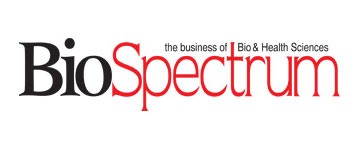Inpatient rehabilitation can help in Stroke Recovery
There are often many complications associated with strokes in the form of after-effects that follow the stroke.
An incidence of a stroke isn’t one that doesn’t leave traces behind. There are often many complications associated with strokes in the form of after-effects that follow the stroke. This post explores the reason why Rehabilitation is of high importance to those who have suffered from this and how it can help them recover and live a life as close to normal as possible.
What is a Stroke?
It is a medical condition where due to any reason, there is lack of blood supply- thereby lack of oxygen to parts of the brain (known as Ischemia) which ultimately leads to the death of the brain tissue. This leads to impaired functions of the areas that were under the control of the affected part of the brain. Strokes can be essentially of two types:
Ischemic strokes caused by lack of blood supply to the brain.
Hemorrhagic strokes that are caused due to bleeding in the brain which affects the functioning of the affected areas of the brain.
Depending on the duration of the stroke, if the symptoms have been present for less than a couple of hours the stroke may be referred to as a transient ischemic attack.
What are the effects of a Stroke?
- The brain remains swollen following the incident of a stroke which is evident through proper imaging.
- Infections can occur especially in the chest region causing a condition known as pneumonia. This occurs because a stroke, depending on the side of the brain affected puts the patient in a half paralysis state (usually) where one side of the body cannot be moved by the patient.
- Pneumonia occurs as a result of long-term hospital admission as well and can be controlled using antibiotics. Similarly, since the patients are catheterized many lose bladder control following a stroke and develop urinary tract infections that are also manageable.
- More severe incidents of stroke result in seizures that result in the severe discomfort of the patient but are medically manageable under the supervision and continued medication.
How does inpatient rehabilitation help?
1. Medical supervision: Continuous medical supervision is provided in good rehabilitation centres that help the patients with conditions that require follow up scanning and diagnostic help, as well as an introduction of necessary medications to the patients in order to deal with each arising complication. This includes prescribing the right antibiotics, anticonvulsants, etc.
2. Counselling and proper medical advice: The patient’s families receive counselling and proper medical advice on how to control hypertension in the patients whose stroke has resulted from long-standing hypertension that has not been controlled. This counselling is provided by experts who have years of knowledge and collected experience dealing with stroke recovery cases. The importance of such lifestyle changes and continued support to the patient is emphasized to the families who are also educated on how best to manage the patients.
3. Physical Exercises/Treatment Regimens: Physical exercises as a part of physiotherapy play a major role in the stroke recovery. Under the guidance of a proper physiotherapist and working along with them, the patients slowly recover from the after-effects of the stroke that have resulted in the muscles being shortened and unable to move due to long-standing lack of movement exercises. They are provided with a wide range of exercises that help them improve their basic motion function and thus relieving any clot formation or blood circulation problems to the affected limbs.
These exercises are also important to avoid the formation of bed sores in the patient who are made to move from side to side and lie on different sides to prevent the occurrence of these bed sores.
4. Speech and Swallow Therapy: Strokes result in the patients being unable to speak or swallow according to the extent of damage caused to the affected areas. Well facilitated rehabilitation centres, experienced in helping patients undergoing stroke recovery are trained to provide speech and swallow therapy that is tailored for such patients and work on their basic skills to let them lead a life as comfortable as possible.
5. Occupational Therapy: As best possible by the current ability of the patients to move and function, occupational therapy helps them to practice and learn basic life that allow them to carry on a relatively independent and normal life ahead where they can take care of themselves should the need arise. This involves teaching them to wash- by helping them to do so at first and then making them do it on their own, similarly other skills as well.
6. Emotional And Psychological Support: Patients who have undergone an incident as traumatising as a stroke are highly vulnerable to developing clinical depression and associated withdrawal and other behavioural changes that need to be rectified for the sake of the patients well being. Therapy helps the patients slowly come to terms with their condition and regain the will to lead a normal life again by working towards it through physiotherapy and other aspects of stroke recovery. Through rigorous group therapies, counselling sessions and medications- should the need arise; the patients are helped out of their depressive stages.
Thus, by improving all the areas of the patient’s health including the physical and mental aspects, an inpatient rehabilitation plays a major role in stroke recovery.
–Dr. Vijay Janagama, Director, New Initiatives, SuVitas Holistic Healthcare

